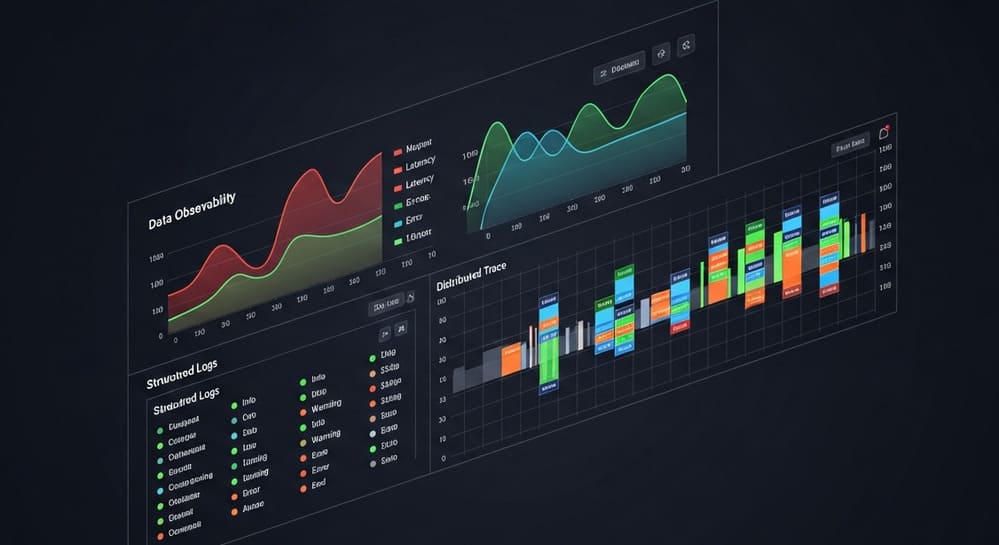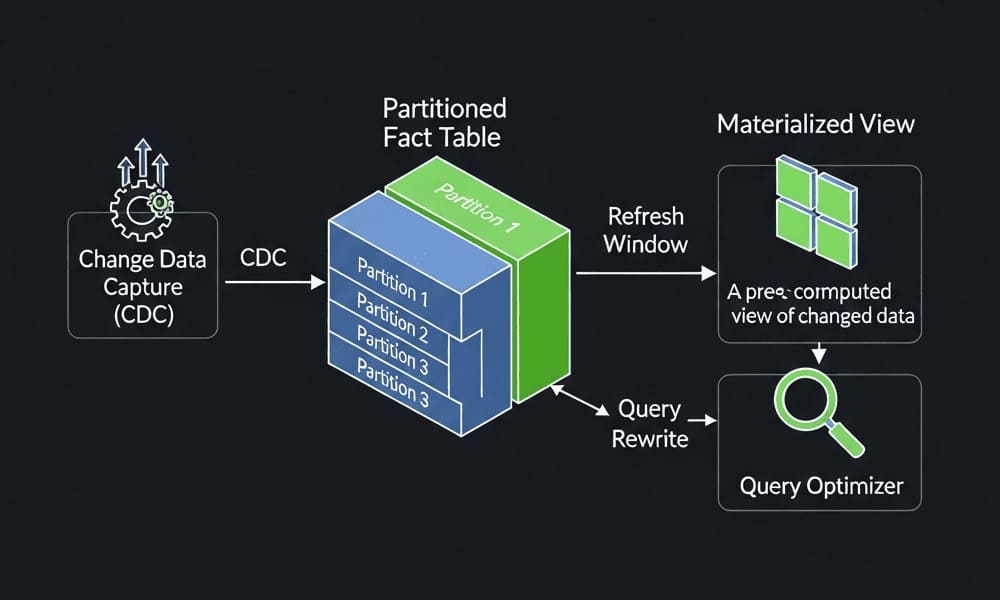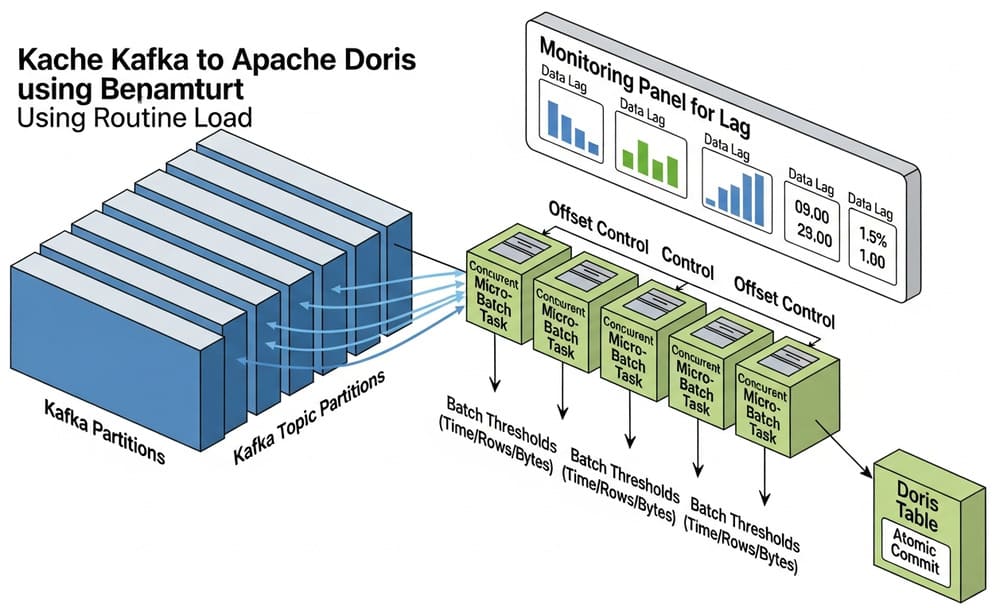Internal vs External Staging in Snowflake: The No-Nonsense Guide for Data Engineers
Hook: Your pipeline is “green,” but costs are spiking and loads are flaky. Nine times out of ten, you misused Snowflake stages. Pick the wrong one, and you’ll overpay, overcomplicate IAM, or throttle throughput. Pick the right one, and COPY INTO screams, governance is clean, and auditors stop pinging you.
Why this matters
Snowflake stages are the gateway for bulk data movement. Every fast, reliable load/unload in Snowflake goes through a stage. Choosing internal vs external changes cost, security, latency, and ops:
- Internal stages → Snowflake-managed storage, simplest auth, strong encryption, great for ingest buffers and secure unloads.
- External stages → Your S3/ADLS/GCS, ideal for lakehouse patterns, cross-system sharing, and cheap object storage at scale.
Concepts & Architecture
What is a Stage?
A stage is a pointer to a storage location + optional defaults (file format, credentials, directory options). Snowflake reads/writes files via stages for COPY INTO <table> (ingest) and COPY INTO <stage> (unload).
Types of stages
- Internal (Snowflake-managed):
- User stage:
@~(per-user scratch) - Table stage:
@%TABLE_NAME(co-located with a table) - Named internal stage:
CREATE STAGE my_int_stage ...
- User stage:
- External (your cloud storage):
- Named external stage:
CREATE STAGE my_ext_stage URL='s3://...' STORAGE_INTEGRATION=...
- Named external stage:
When to choose which
| Dimension | Internal Stage | External Stage |
|---|---|---|
| Auth Simplicity | Easiest (no cloud IAM) | Needs storage integration + cloud IAM |
| Cost of storage | Snowflake storage rates | Your cloud bucket pricing (usually cheaper at large scale) |
| Latency for COPY | Excellent (managed path) | Excellent if colocated in same region |
| Cross-system sharing | Limited | Native with S3/ADLS/GCS |
| Governance controls | RBAC + encryption | Plus bucket policies, KMS, VPC endpoints |
| Operational blast radius | Snowflake-only | Depends on your broader cloud posture |
| Use cases | Landing buffer, secure unloads, temp files | Lakehouse bronze/silver, exchange zones, ML feature exports |
Real Examples (SQL you can paste)
1) Internal stage ingest (fast path for CSV/JSON/Parquet)
-- Create file format (reusable)
CREATE OR REPLACE FILE FORMAT ff_parquet
TYPE = PARQUET;
-- Create a named internal stage with default format
CREATE OR REPLACE STAGE stg_int
FILE_FORMAT = ff_parquet
ENCRYPTION = (TYPE = 'SNOWFLAKE_SSE'); -- server-side encryption
-- Upload local files to internal stage (from client/connector)
-- PUT file:///data/events/*.parquet @stg_int AUTO_COMPRESS=TRUE;
-- Load into target table
COPY INTO analytics.events
FROM @stg_int
FILE_FORMAT = (FORMAT_NAME = ff_parquet)
ON_ERROR = 'CONTINUE'; -- consider 'ABORT_STATEMENT' for stricter SLAs
Why this rocks: zero IAM hassle, great for CI/CD test data, PII-safe buffer (RBAC + masking at table).
2) External stage ingest (S3 + Storage Integration)
-- 1) Create an integration that binds Snowflake to your cloud IAM role
CREATE OR REPLACE STORAGE INTEGRATION si_raw_s3
TYPE = EXTERNAL_STAGE
STORAGE_PROVIDER = 'S3'
ENABLED = TRUE
STORAGE_AWS_ROLE_ARN = 'arn:aws:iam::123456789012:role/snowflake-stage-role'
STORAGE_ALLOWED_LOCATIONS = ('s3://company-raw/landing/');
-- 2) Create the external stage
CREATE OR REPLACE STAGE stg_ext_raw
URL = 's3://company-raw/landing/'
STORAGE_INTEGRATION = si_raw_s3
FILE_FORMAT = (TYPE = PARQUET);
-- 3) Optional: make file listing faster with directory table metadata
ALTER STAGE stg_ext_raw SET DIRECTORY = (ENABLE = TRUE);
-- 4) Load
COPY INTO bronze.events_raw
FROM @stg_ext_raw
PATTERN = '.*\.parquet'
ON_ERROR = 'CONTINUE';
Why this rocks: Single source of truth in your data lake, easy sharing with producers/consumers outside Snowflake, cheap long-term storage.
3) Unload (export) patterns
To internal (secure handoff):
COPY INTO @stg_int/unloads/events_yyyy_mm_dd/
FROM (SELECT * FROM analytics.events WHERE event_date = CURRENT_DATE())
FILE_FORMAT = (TYPE = PARQUET COMPRESSION = SNAPPY)
OVERWRITE = TRUE;
To external (downstream ML/BI):
COPY INTO @stg_ext_raw/exports/events_yyyy_mm_dd/
FROM analytics.events
FILE_FORMAT = (TYPE = PARQUET)
SINGLE = FALSE -- multiple files for parallelism
MAX_FILE_SIZE = 500000000; -- ~500MB per file target
Best Practices (Battle-tested)
Performance
- Colocate regions. Keep external buckets and Snowflake account in the same cloud region to avoid cross-region latency/egress.
- Right-size files. Aim ~100–500 MB Parquet, 256 MB compressed CSV. Too many tiny files kill
COPYthroughput (metadata overhead). - Use
PATTERNand directory tables. When you have millions of objects, enableDIRECTORY = (ENABLE=TRUE)and filter viaPATTERNto cut listing time. - Parallelize prudently. Default
COPYparallelism is solid; boost with warehouse size, not artificial concurrency that competes for I/O.
Reliability & Idempotency
- Atomicity guard: Load to staging tables, validate row counts/checksums, then
MERGE/SWAP. - Duplicates: Prefer file-based dedupe—include ingestion_date and source_file_name; use
COPY INTO ... FORCE=FALSEto skip already loaded files. - Error quarantine: Route bad records:
ON_ERROR='CONTINUE'+VALIDATION_MODE='RETURN_ERRORS'in test, store rejects in a diagnostics table.
Security & Governance
- Storage Integrations only. Avoid embedding keys on external stages; use assume-role (AWS) or managed identities (Azure/GCP).
- PII: Keep internal stages for transient PII landings; unload only de-identified datasets externally.
- RBAC separation: Different roles for creating stages vs executing
COPY INTO. LimitSTORAGE_ALLOWED_LOCATIONStightly. - Encryption: Let Snowflake manage encryption (internal) or enforce KMS/CMK (external). For stringent orgs, use network policies/VPC endpoints for egress control.
Cost Control
- Purge aggressively on internal stages (it’s billable). Set lifecycle rules on external buckets.
- Avoid small-file storms. Push compaction upstream (Spark/Glue/Kafka Connect with rolling files).
- Unload wisely: Don’t
SINGLE=TRUEfor large exports—creates massive files and long wall time.
Operability
- Schema drift: Use
COPY ... MATCH_BY_COLUMN_NAME=CASE_INSENSITIVEwith Parquet/JSON cautiously; pin versions and add drift tests. - Observability: Log
COPY_HISTORYand stage directory listings to a control table; alert when file counts/latency deviate. - Contracts: Treat stage paths as part of your data contract—document folder structure, file formats, and retention in the repo.
Common Pitfalls (and blunt fixes)
- Hardcoding keys on external stages → Fix: switch to
STORAGE_INTEGRATION. Keys in DDL are a governance audit magnet. - Millions of tiny JSON files → Fix: batch upstream; or use Snowpipe with auto-ingest + compaction job before silver.
- Cross-region buckets → Fix: move data or Snowflake account; paying egress to suffer latency is self-sabotage.
- Blind
ON_ERROR='CONTINUE'→ Fix: only in dev; in prod, quarantine and measure error rate, fail fast on spikes. - Skipping file format objects → Fix: always CREATE FILE FORMAT; don’t bury options inside ad-hoc COPY commands.
Quick Decision Flow (keep this in your runbook)
- Need the lake as the system of record or interop with other tools? → External stage
- Need simplest, secure landing for batch/adhoc loads? → Internal stage
- Handling PII or regulated data early in the pipeline? → Land internal, transform, then publish to external if needed
- Bill shock from storage? → Move cold data to external, keep only hot/transient in internal
- Complaints about slow loads? → Check region colocation, file sizes, and directory metadata
Conclusion & Takeaways
- Stages are your data IO contract. Get the stage choice right before tuning warehouses.
- Internal stages = security and simplicity; external stages = openness and low-cost lake patterns.
- Performance depends more on file layout and region than on warehouse size.
- Bake observability and governance into stage usage (formats, patterns, integrations, retention).
Call to action: Want me to audit your current staging strategy and send a punch-list (perf, cost, security)? Say “audit my stages” and tell me your cloud/region.
Internal link ideas (for your site)
- “Snowpipe vs COPY INTO: When to Stream vs Batch”
- “Designing Parquet File Sizes for Snowflake Performance”
- “Data Contracts for Object Storage Paths and Schemas”
- “Row-Level Security & Masking Policies: PII in Snowflake”
- “Warehouse Sizing: Concurrency, Queues, and Cost”
Image prompt (for AI tools)
“A clean, minimal isometric diagram comparing internal vs external Snowflake stages: left shows Snowflake-managed storage feeding COPY INTO with user/table/named stages; right shows S3/ADLS/GCS buckets via a STORAGE_INTEGRATION role/identity; arrows for load/unload; annotations for encryption, directory tables, and file-size guidance. High contrast, professional, blueprint style.”
Tags
#Snowflake #DataEngineering #Staging #ETL #DataArchitecture #CloudStorage #S3 #ADLS #GCS #COPYINTO




